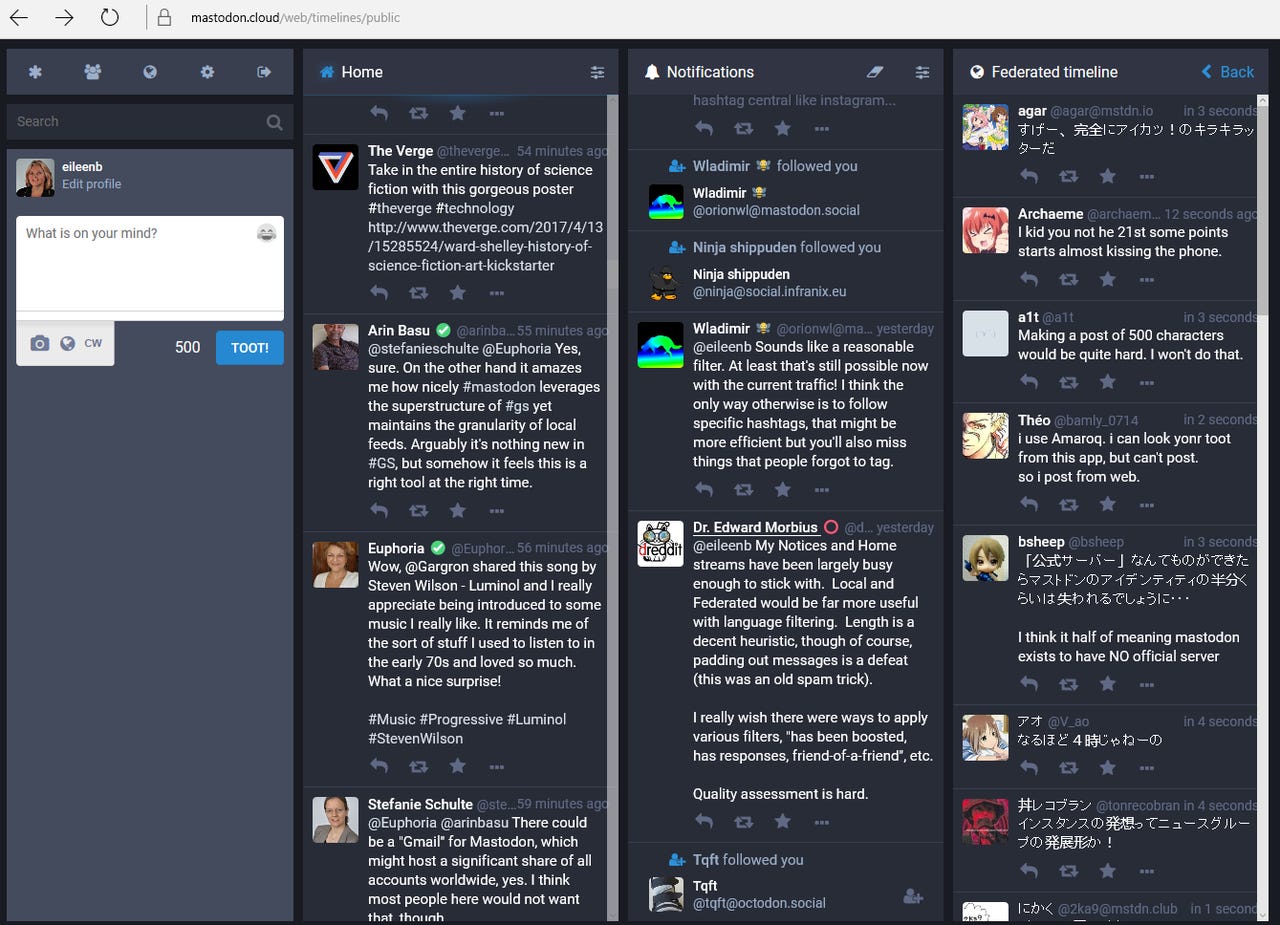Is Mastodon the new social media star, or imploding black hole?


Social media early adopters have been flocking to Mastodon since mainstream tech media started to report on the "new social network." But Mastodon is not really an owned social network at all.
Mastodon is a FOSS (Free and Open Source Software) decentralized microblogging platform. It is a piece of software that has been written by Eugen Rochko to enable users to use the social network as an "alternative to commercial platforms."
He wrote the software to be compatible with an existing network of servers, often called the "fediverse" which runs software called "GNU Social." GNU Social and its protocols govern interoperability between software such as StatusNet, Frendica, PostActiv, and Hubzilla.
In a very short time, Mastodon instances (server domains) began popping up across the fediverse with compatible software installed. Users can log on to any Mastodon instance and communicate with anyone across the Mastodon fediverse in "Toots" of up to 500 characters.
At the moment there are 900 instances, over 100 have only one user, and 326,000 users across Mastodon.
Only ten days ago there were 100,000 users registered on the service with some instances taking the lion's share of user registrations. The server instance Rochko created, Mastodon.social, soon became so popular that it is currently closed to new registrations.
Mastodon is reminiscent of Geocities in the 1990s, or the old bulletin boards. If you are not familiar with bulletin boards it can take a while to understand how it works.
To join Mastodon, take look at the list of instances at https://instances.mastodon.xyz/, choose an instance that accepts registrations, has HTTPS, good uptime, and a set of terms and conditions you like. You can then follow any user across any instance.
It is not at all easy to find users. They are not exposed as easily as on Twitter. To find a user you need their full URL such as https://mastodon.cloud/@eileenb, https://mastodon.nuzgo.net/@steevc, https://community.highlandarrow.com/maiyannah, or https://mastodon.cloud/@dredmorbius.
Users only appear in the federated timeline if they have been followed by another user. Your username is only unique on the instance where you created your username -- not across the whole Mastodon entity.
So @eileenb on Mastodon.social is not the same person as my @eileenb account on Mastodon.cloud. This naming convention uses the same principle as unique email addresses do on email domains.
And therein lies the issues for brands who want to join this new network and advertise to the community. Owning your name across the whole entity is important for some brands and users who will find this username convention and flexibility across instances a show stopping issue.
Once logged in, your home timeline, (which looks a lot like Tweetdeck) contains the users you follow. There is a notifications column showing users who have followed you, "boosted" your status (essentially the same as a retweet), or referred to you in a post, called a Toot.
There is also a column showing the federated feed across all instances. This shows posts from users who have been followed by other users.
It might be confusing to users who do not understand the concept of a federated network, and can not understand that they naturally can not see everyone across the fediverse.
The fediverse is not governed by a single entity. Freedom of speech prevails here. The only governance is provided by individual admins on their servers. Admins and instances are entirely autonomous.
Each admin decides which instances they peer with and sets their own rules on who they federate with. It's easy to add an instance to the Mastodon fediverse. It's also easy to get blocked if you create an instance that the other admins do not like.
The graph of the fediverse
There are also other problems with some instances.
Just as users can be blocked, admins can block whole instances from communicating with the rest of the Mastodon fediverse.
Users must rely on the admin for site stability, backups, disaster recovery, patching, and server updates, etc.
Users cannot gauge the reliability of the server they have logged on to until it goes down.
But despite these issues, Mastodon will not implode any time soon. As more and more users join, more instances will appear to support them.
Moonman (who helped me understand the fediverse), believes this will happen, saying: "Mastodon has made the decentralized network much more accessible, and many more 'ordinary' users will stay."
Large centralized services could be paid to promote products of course, but users will have the choice whether to follow them or not. Brands will have quite a job defining a strategy for Mastodon.
I think that enterprises will give the service a wide berth as they will not be able to find a way to monetize the time spent getting adequate coverage. Mastodon diehards will rejoice at this.
Twitter and Facebook can rest easy when thinking about their ad revenue. Dissatisfied users of the birdsite are already on Quitter, and there are a multitude of Facebook alternatives.
Mastodon will continue to grow and provide an alternative to both for interested users.
Me? In the last seven days I have had more meaningful interactions with my few Mastodon followers there than I have over the last year with the passive followers I have on Twitter.
I have learned lots about GNU Social and how this network can sustain itself.
I won't be going anywhere else for a while.
Should you use Facebook at work?